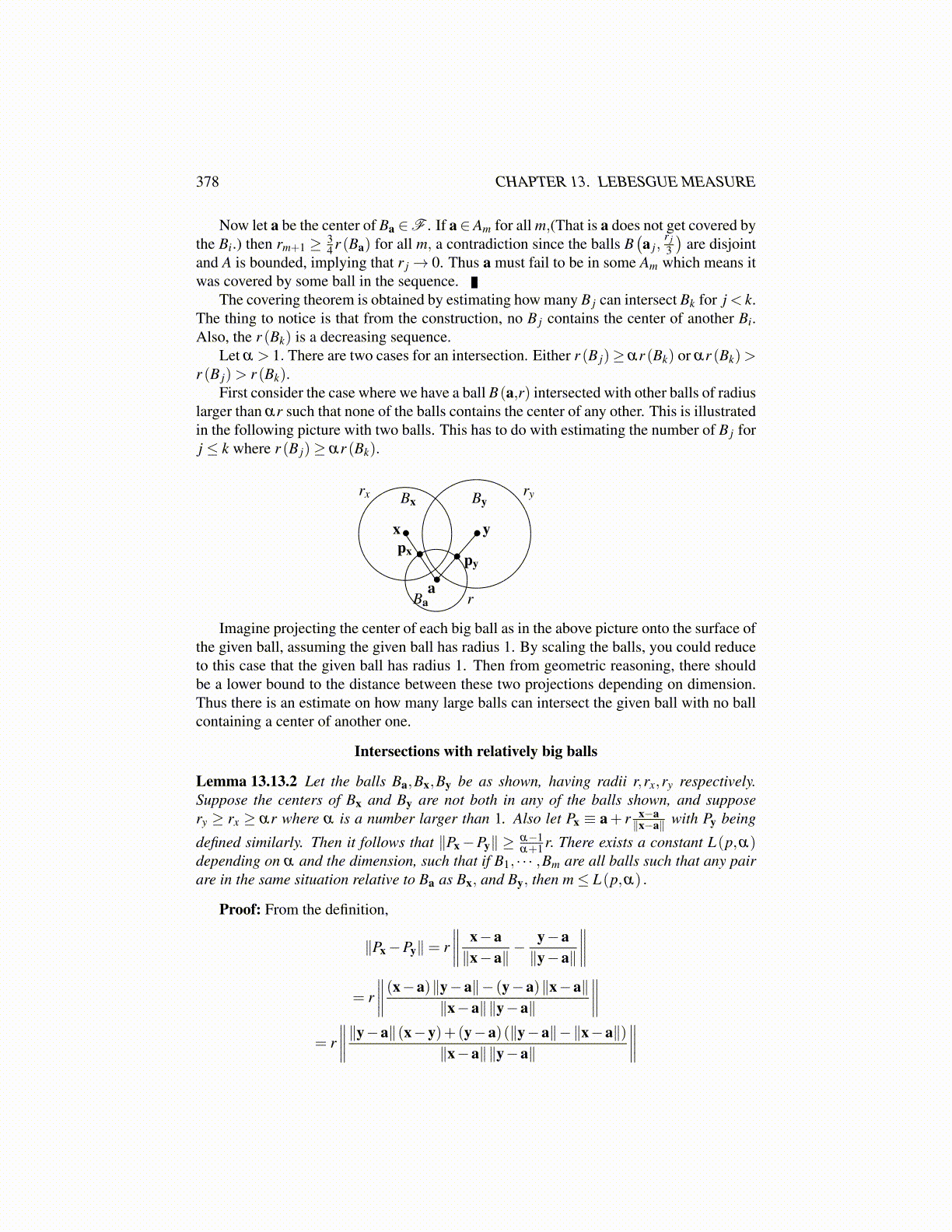
378 CHAPTER 13. LEBESGUE MEASURE
Now let a be the center of Ba ∈F . If a∈ Am for all m,(That is a does not get covered bythe Bi.) then rm+1 ≥ 3
4 r (Ba) for all m, a contradiction since the balls B(a j,
r j3
)are disjoint
and A is bounded, implying that r j→ 0. Thus a must fail to be in some Am which means itwas covered by some ball in the sequence.
The covering theorem is obtained by estimating how many B j can intersect Bk for j < k.The thing to notice is that from the construction, no B j contains the center of another Bi.Also, the r (Bk) is a decreasing sequence.
Let α > 1. There are two cases for an intersection. Either r (B j)≥ αr (Bk) or αr (Bk)>r (B j)> r (Bk).
First consider the case where we have a ball B(a,r) intersected with other balls of radiuslarger than αr such that none of the balls contains the center of any other. This is illustratedin the following picture with two balls. This has to do with estimating the number of B j forj ≤ k where r (B j)≥ αr (Bk).
Ba
Bx By
•ar
•x
rx
•y
ry
••px py
Imagine projecting the center of each big ball as in the above picture onto the surface ofthe given ball, assuming the given ball has radius 1. By scaling the balls, you could reduceto this case that the given ball has radius 1. Then from geometric reasoning, there shouldbe a lower bound to the distance between these two projections depending on dimension.Thus there is an estimate on how many large balls can intersect the given ball with no ballcontaining a center of another one.
Intersections with relatively big balls
Lemma 13.13.2 Let the balls Ba,Bx,By be as shown, having radii r,rx,ry respectively.Suppose the centers of Bx and By are not both in any of the balls shown, and supposery ≥ rx ≥ αr where α is a number larger than 1. Also let Px ≡ a+ r x−a
∥x−a∥ with Py being
defined similarly. Then it follows that ∥Px−Py∥ ≥ α−1α+1 r. There exists a constant L(p,α)
depending on α and the dimension, such that if B1, · · · ,Bm are all balls such that any pairare in the same situation relative to Ba as Bx, and By, then m≤ L(p,α) .
Proof: From the definition,
∥Px−Py∥= r∥∥∥∥ x−a∥x−a∥
− y−a∥y−a∥
∥∥∥∥= r∥∥∥∥ (x−a)∥y−a∥− (y−a)∥x−a∥
∥x−a∥∥y−a∥
∥∥∥∥= r∥∥∥∥∥y−a∥(x−y)+(y−a)(∥y−a∥−∥x−a∥)
∥x−a∥∥y−a∥
∥∥∥∥